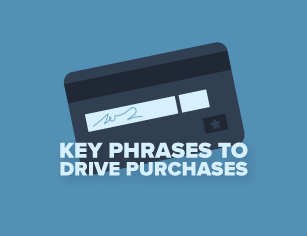The pandemic may have forced the entertainment industry to scale back marketing budgets, conduct mass layoffs, and sell assets — but in 2022, life has mostly returned to normal, with consumers eager to make up for lost time. Broadway is back, our favorite artists are performing in packed arenas, and sporting events are drawing huge crowds.
However, financial worries are complicating straightforward playbooks entertainment companies usually deploy. It’s a confusing time for entertainment companies wondering how they should reimagine their post-pandemic advertising budgets.
The Entertainment Industry in 2022: A Snapshot
As pandemic measures loosened in 2021, companies across the experience industry (including airlines, cruises, and entertainment) naturally ramped up ad spending to recoup lost revenue and capitalize on consumers’ pent-up demand.
However, despite the initial post-pandemic optimism, recent articles suggest the reality hasn’t been rosy. From regional theaters to Broadway shows, local orchestras to movie theaters, ticket sales are still below pre-pandemic levels. The cause is a combination of continued COVID-19 concerns, lack of tourists, and financial worries on the horizon: Inflation is still lingering at 8% and a potential recession is looming, so consumers are tightening their purse strings.
With 82% of Americans worried about inflation, the travel and restaurant sectors are already taking a hit. It’s likely consumers may start cutting back on pricier entertainment experiences. Luckily, wallet-friendly entertainment options (like local live events or movies) have historically been recession-proof.
Though it’s unclear when, the entertainment industry will undoubtedly rebound — meaning entertainment companies must be extra strategic when allocating their post-pandemic ad budgets and resources. Here are three tips to help you stay ahead.

Tip 1: Don’t stop advertising
In the face of a potential economic downturn, entertainment companies may feel compelled to slash their ad budgets. But as the classic 2009 recession case study of McDonald’s vs. Burger King reveals, brands that capitalize on their competitors’ scaling back win big when the economy picks up again.
Don’t be afraid to continue spending on advertising to build brand awareness. The key is to adjust your messaging, creative, and strategies to new consumer needs and sentiments. You want to appease their post-pandemic desire for new experiences while staying sensitive to new financial realities.
Tip 2: Get creative with new ad formats
It’s a general rule of thumb that entertainment companies should not only diversify their paid media strategy but also invest marketing dollars into experimenting with different ad formats and platforms, such as the following:
- Streaming ads: With Netflix and Disney+ launching ad capabilities soon, streaming ads are more relevant than ever, especially when you target audiences with an affinity for theater, live entertainment, and live music.
- Animated ads: Performing up to 2.5 to 3.5 times better than static images, motion ads are a simple way to level up static creative and boost results.
- Interstitial ads: These full-screen takeovers are fantastic opportunities to showcase the magic of your entertainment experience and grab attention.

Tip 3: Monitor changing seasonal advertising trends
Before the pandemic, seasonal advertising trends were predictable: pricier ad inventory during the holiday season, followed by cheaper ad costs in January as companies plan their ad budgets for the year.
However, data from 2021 revealed something startling: October and November have replaced December as the peak advertising time of the year. Worried about staffing, supply chain challenges, and low inventory levels, some brands lowered ad spend. Comparatively, others launched campaigns that capitalized on consumers’ early shopping to ensure gifts weren’t curtailed by shipping delays.
What does this mean for entertainment brands? You should always keep a close eye on how advertising costs fluctuate — or find a partner who can keep you abreast of what’s happening and offer insights into how to reimagine your ad budget.


